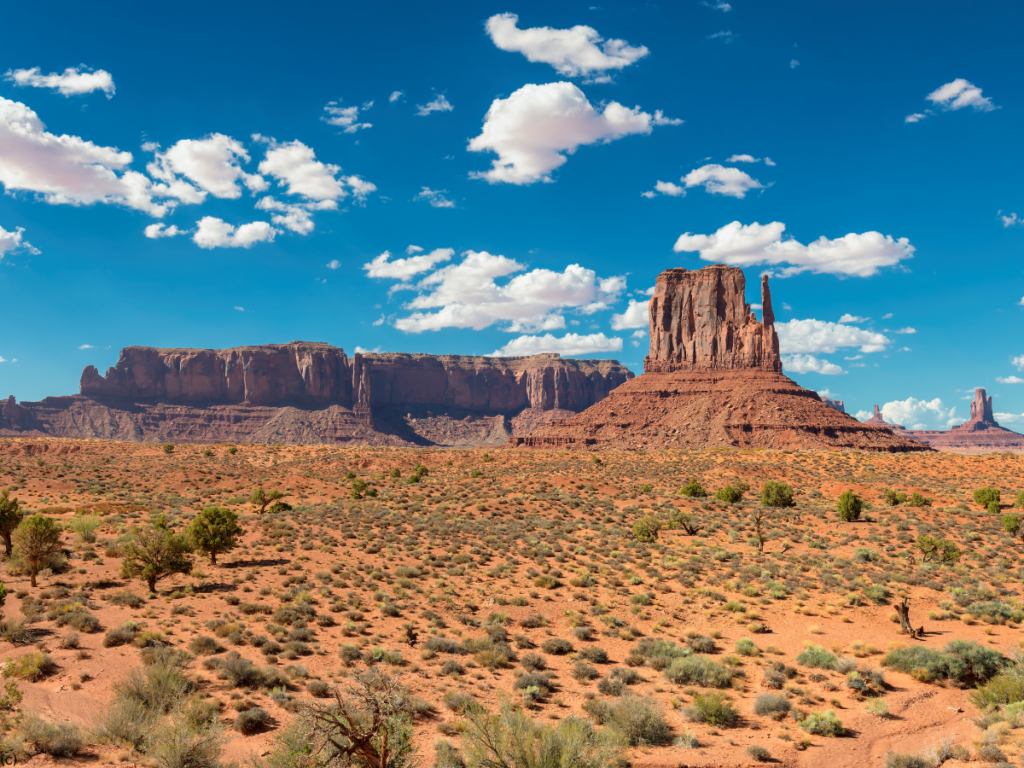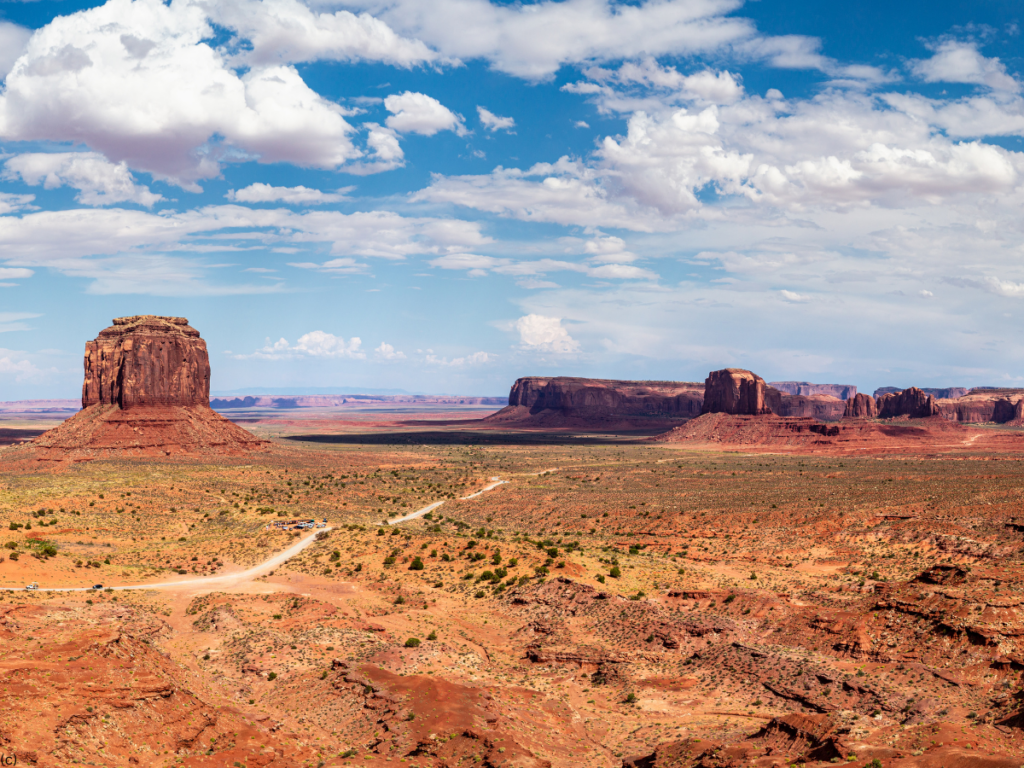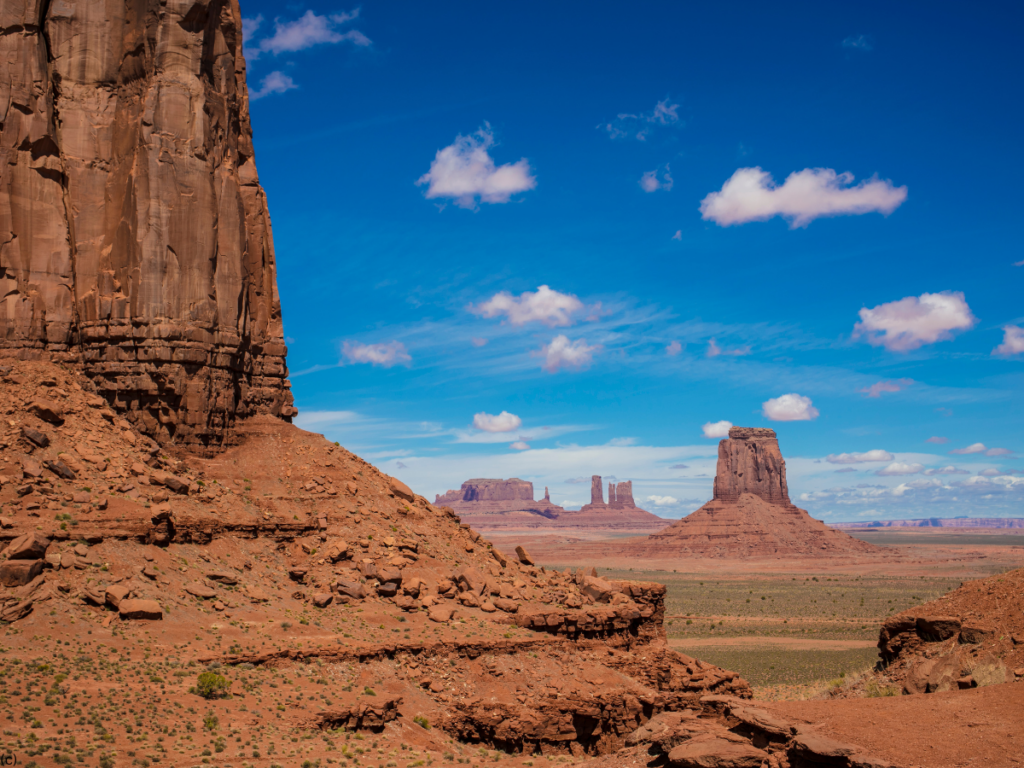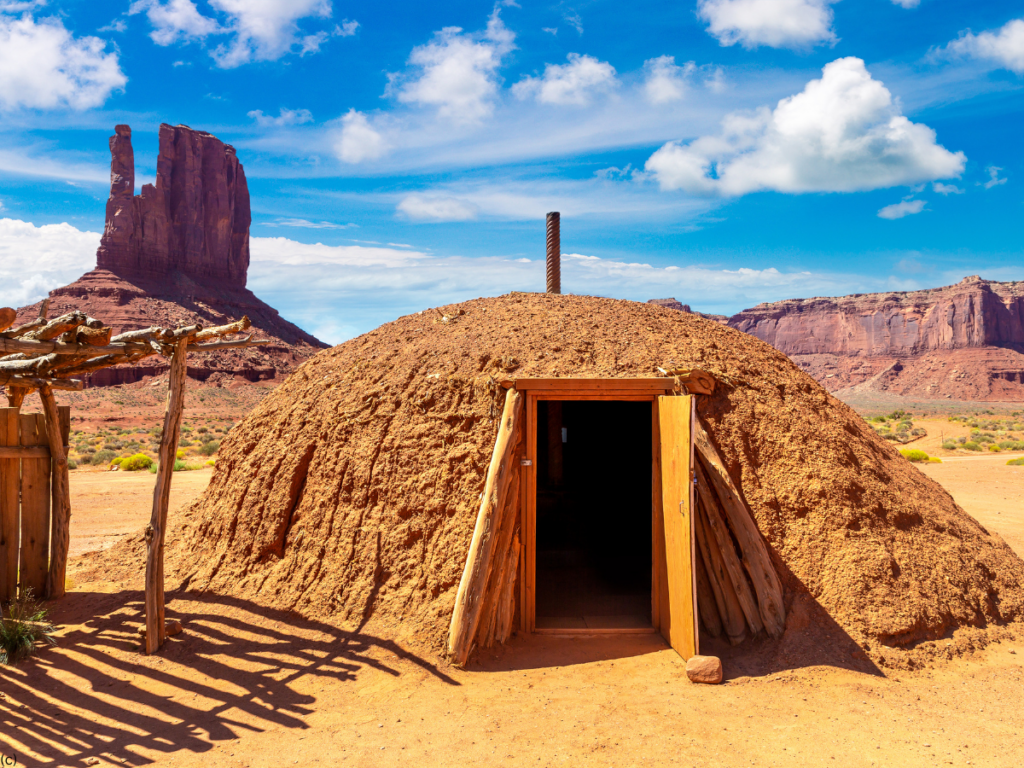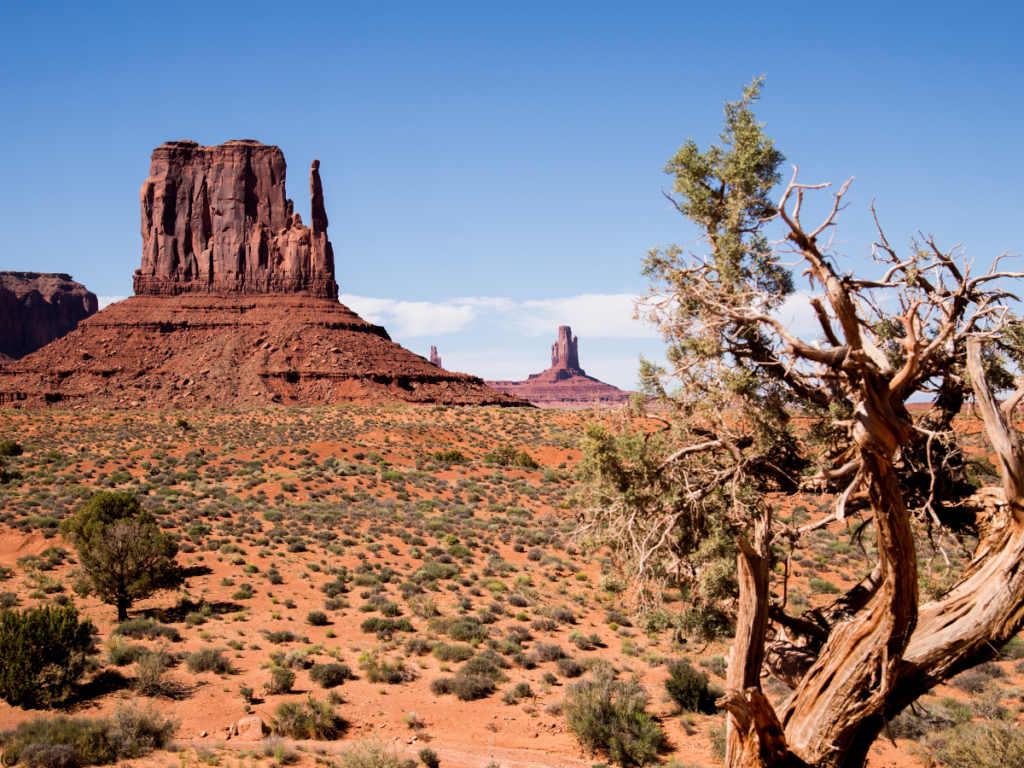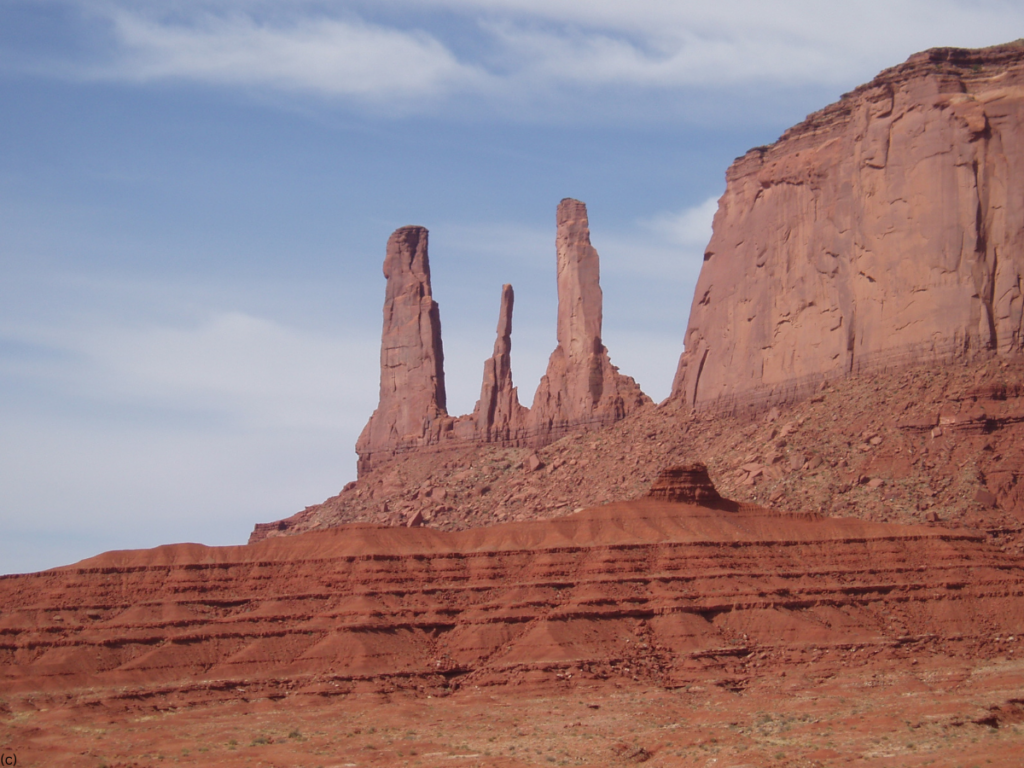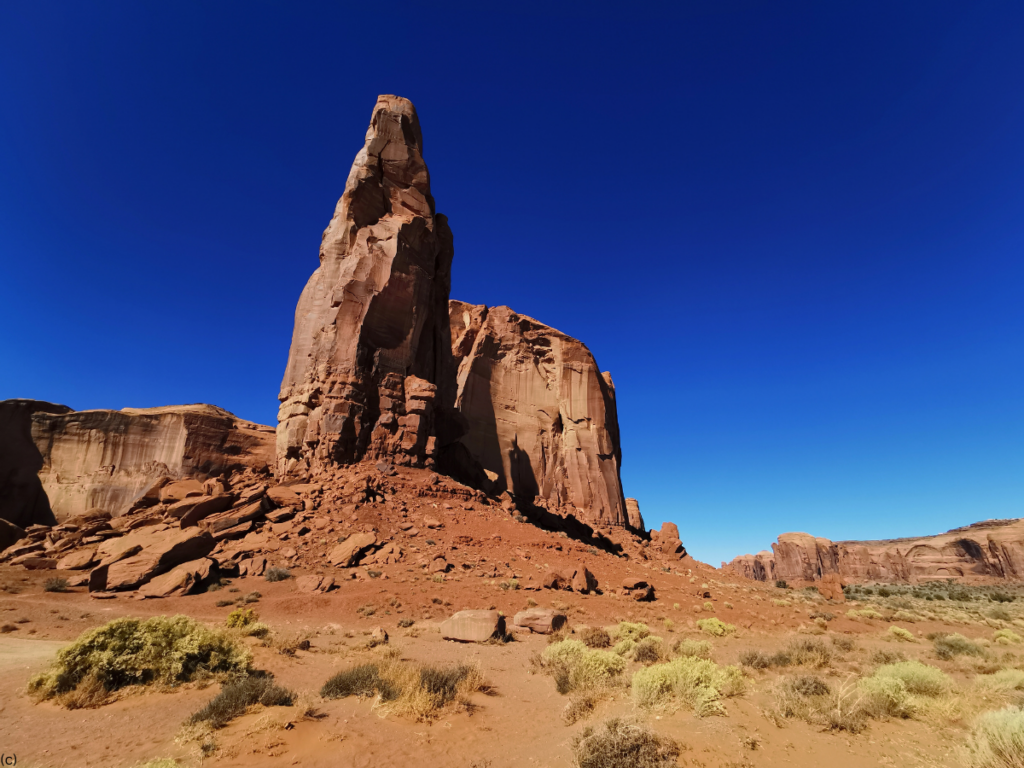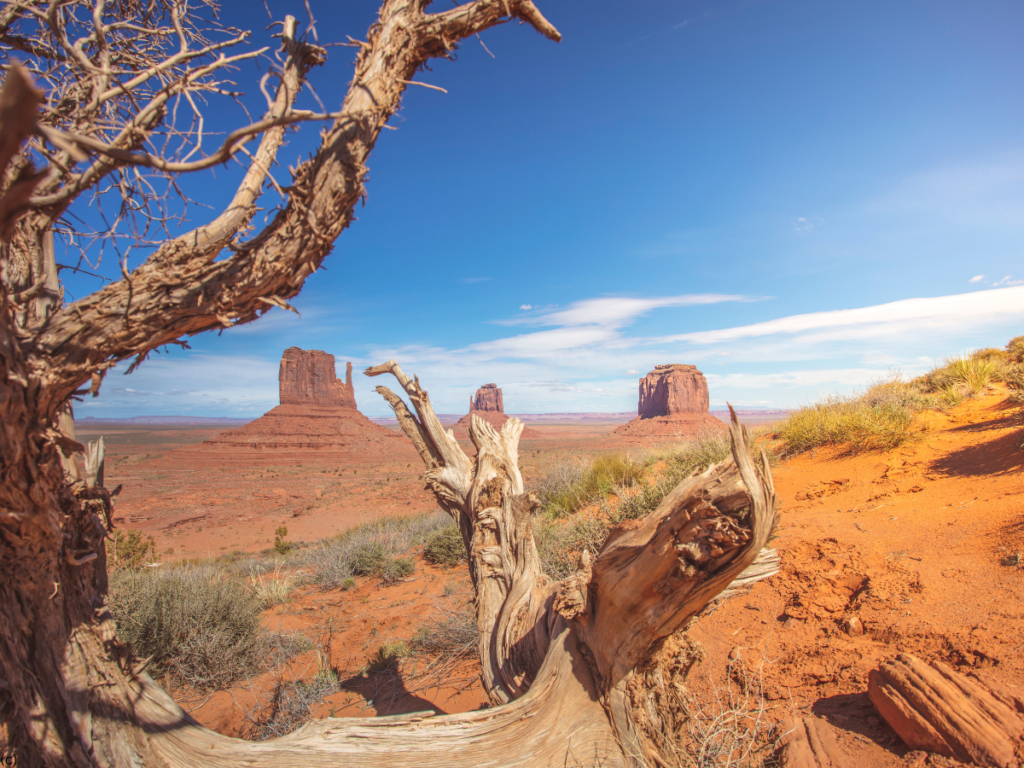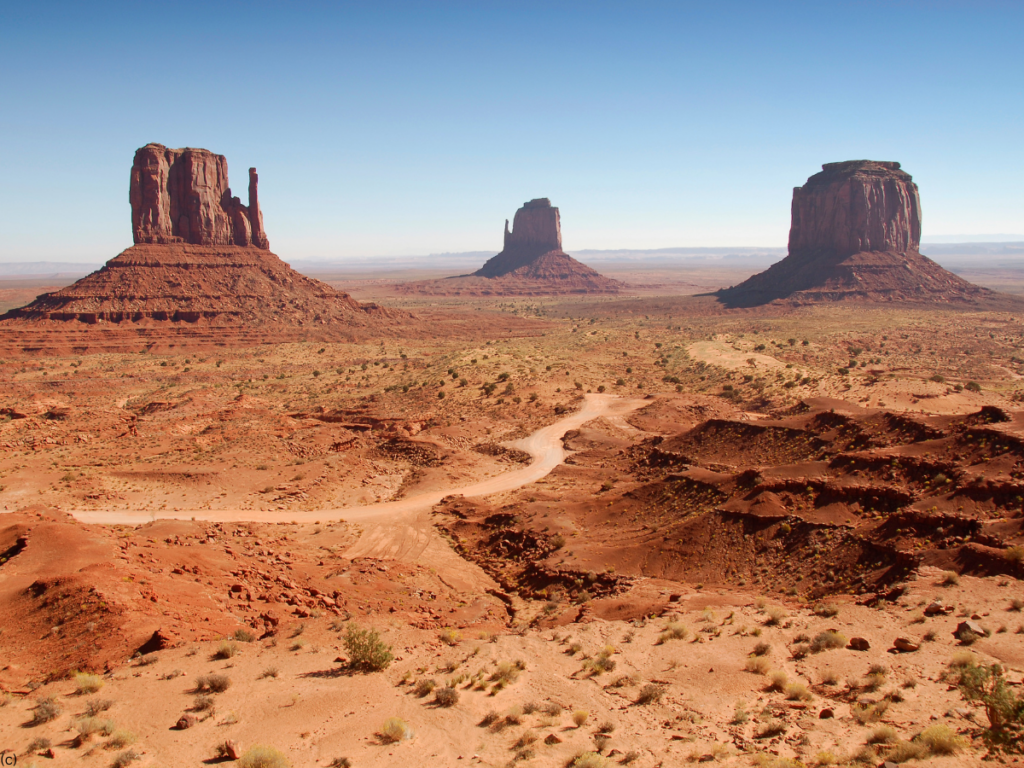 , where towering red sandstone formations rise from the desert floor and stretch towards the sky. Situated on the Arizona-Utah border, Monument Valley Navajo Tribal Park is one of the most photographed and celebrated places in the American Southwest, epitomizing the wild, rugged, and untamed spirit of the region. For anyone looking to experience the grandeur of nature and the rich cultural heritage of the Navajo people, a visit to Monument Valley is an unforgettable journey.
, where towering red sandstone formations rise from the desert floor and stretch towards the sky. Situated on the Arizona-Utah border, Monument Valley Navajo Tribal Park is one of the most photographed and celebrated places in the American Southwest, epitomizing the wild, rugged, and untamed spirit of the region. For anyone looking to experience the grandeur of nature and the rich cultural heritage of the Navajo people, a visit to Monument Valley is an unforgettable journey.
1. Introduction to Monument Valley
Monument Valley is part of the Colorado Plateau and is characterized by a unique desert landscape that includes mesas, buttes, and spires formed by millions of years of erosion. The valley is part of the Navajo Nation, the largest Native American territory in the United States, and is co-managed by the Navajo Parks and Recreation Department.
The valley gained worldwide fame through its appearances in numerous Western films, TV shows, and commercials, most notably those directed by John Ford, who used Monument Valley as a backdrop for his iconic films like Stagecoach and The Searchers. Today, it remains a popular destination for travelers seeking to experience the quintessential Western landscape.
2. Getting to Monument Valley
Monument Valley is relatively remote, but it is accessible by car from several major cities in the Southwest. The closest major airport is in Flagstaff, Arizona, approximately a 3-hour drive away. Many visitors also arrive from Page, Arizona (2 hours away), or from Moab, Utah (2.5 hours away), which makes for a scenic drive through some of the most beautiful parts of the American Southwest.
Driving Directions:
- From Flagstaff: Take US-89 North to US-160 East, then turn left onto US-163 North.
- From Page: Take US-98 East to US-160 East, then turn left onto US-163 North.
- From Moab: Take US-191 South to Bluff, then take US-163 South.
There are no public transportation options directly to Monument Valley, so renting a car or joining a guided tour is necessary.
3. Best Time to Visit
The best time to visit Monument Valley is during the spring (March to May) and fall (September to November) when the temperatures are mild, and the weather is generally stable. Summers can be extremely hot, with temperatures often exceeding 100°F (38°C), making outdoor activities uncomfortable. Winter, while cold, offers the possibility of seeing the valley dusted with snow, creating a stunning contrast against the red rock formations.
Tip: If you’re hoping to catch the perfect light for photography, sunrise and sunset are the ideal times to capture the dramatic shadows and vibrant colors of the valley.
4. Things to Do in Monument Valley
Monument Valley offers a range of activities that allow visitors to immerse themselves in its natural beauty and cultural significance. Here are some of the top things to do:
4.1. Self-Guided Valley Drive
The 17-mile Valley Drive is a self-guided tour that takes you through some of the most famous landmarks in Monument Valley. The dirt road is rough in places, but it’s passable for most vehicles. Along the way, you’ll see iconic formations like the Mittens, Three Sisters, and John Ford’s Point. The drive typically takes 2-3 hours, depending on how often you stop to take photos.
Tip: If you’re driving yourself, make sure to bring plenty of water, snacks, and a full tank of gas, as there are limited services in the park.
4.2. Guided Tours
For a deeper understanding of the valley’s history, culture, and geology, consider booking a guided tour with a Navajo guide. These tours offer access to restricted areas of the park that are not available to the general public and provide insights into the Navajo way of life, including visits to traditional hogans (Navajo homes) and explanations of the significance of various formations.
There are several types of tours available:
- Jeep Tours: These are the most popular and take you to remote areas that are inaccessible by regular vehicles.
- Horseback Tours: Experience the valley like the Navajo ancestors did by riding horseback through the stunning landscape.
- Photography Tours: For photography enthusiasts, specialized tours are available that focus on capturing the best light and compositions.
4.3. Hiking and Photography
While Monument Valley is not known for extensive hiking trails, there are a few options for those who prefer to explore on foot. The most popular hike is the Wildcat Trail, a 3.2-mile loop that circles the West Mitten Butte. This trail offers close-up views of the buttes and a quiet, solitary experience of the valley’s grandeur.
Photography Tips:
- Use a polarizing filter to enhance the deep blue skies and the red of the sandstone.
- The golden hour (just after sunrise and before sunset) offers the best light for capturing the valley’s dramatic shadows and colors.
4.4. Monument Valley Visitor Center
Before embarking on your adventure, stop by the Monument Valley Visitor Center. The center offers exhibits on the geology, history, and cultural significance of the valley. There’s also a gift shop where you can purchase Navajo crafts and souvenirs.
Tip: The visitor center’s observation deck provides one of the best panoramic views of the valley, making it a great spot for photos.
5. Cultural Significance
Monument Valley is not just a natural wonder; it is also a place of deep cultural significance for the Navajo people. The valley is considered sacred, and many of the formations have spiritual meanings. Visitors are encouraged to respect the land and the Navajo traditions.
The Navajo Nation is the largest Native American tribe in the United States, and their culture is rich in traditions, language, and arts. During your visit, take the opportunity to learn about Navajo culture through guided tours, interactions with local artisans, and attending cultural demonstrations or events if available.
Tip: Consider visiting during the Navajo Nation Fair, which usually takes place in September. It’s the largest Native American fair in the United States and offers a unique opportunity to experience Navajo culture through music, dance, and traditional food.
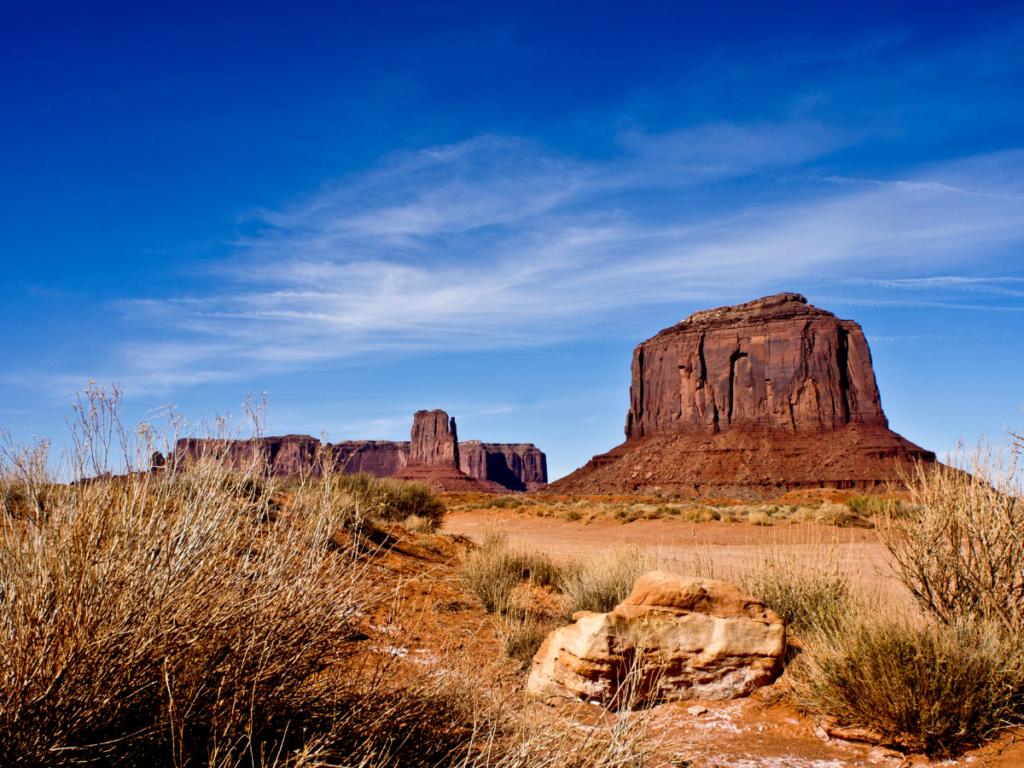 6. Where to Stay
6. Where to Stay
Accommodation options near Monument Valley are limited but varied, ranging from basic campgrounds to more comfortable hotels.
6.1. The View Hotel
The View Hotel is the most popular choice for visitors to Monument Valley. Located within the park, the hotel offers unparalleled views of the valley’s iconic formations right from your room. Each room features a private balcony, allowing you to enjoy the sunrise or sunset in the comfort of your own space. The hotel also offers cabins with stunning views, perfect for those seeking a bit more privacy.
6.2. Goulding’s Lodge
Located just outside the park, Goulding’s Lodge has a long history in Monument Valley, dating back to the 1920s. The lodge offers a range of accommodations, including hotel rooms, RV camping, and tent sites. Goulding’s also has a small museum dedicated to the history of the area and its connection to the film industry.
6.3. Camping
For a more immersive experience, consider camping at one of the designated campsites in the area. The View Campground offers both RV and tent sites, with facilities including restrooms and showers. Camping allows you to fully experience the beauty of the desert night sky, far away from city lights.
Tip: Book accommodations well in advance, especially during peak seasons, as they tend to fill up quickly.
7. Dining and Local Cuisine
Dining options in Monument Valley are limited, but there are a few places where you can enjoy local Navajo cuisine and other dishes.
7.1. The View Restaurant
Located in The View Hotel, this restaurant offers both Navajo and American cuisine. Try traditional Navajo dishes like fry bread, Navajo tacos, and mutton stew. The restaurant also offers stunning views of the valley, making it a great place to relax after a day of exploring.
7.2. Goulding’s Stagecoach Dining Room
Goulding’s Lodge also has a restaurant that serves a mix of American and Southwestern cuisine. The Stagecoach Dining Room is known for its hearty breakfasts and dinners, with an emphasis on local ingredients.
Tip: If you’re planning to be out exploring for most of the day, consider packing a picnic. There are several scenic spots in the valley where you can enjoy a meal surrounded by breathtaking views.
8. Sustainable Tourism and Respect for the Land
As with any travel, it’s important to practice sustainable tourism and respect the land and its people. Monument Valley is a place of deep spiritual significance to the Navajo people, and visitors are encouraged to tread lightly.
- Stay on designated paths to minimize your impact on the environment.
- Respect local customs and traditions. Ask for permission before taking photos of people, especially Navajo residents.
- Leave no trace. Pack out all trash and avoid disturbing wildlife or plants.
Tip: Consider supporting local businesses and artisans by purchasing authentic Navajo crafts and services.
9. Nearby Attractions
While Monument Valley is a destination in itself, there are several nearby attractions worth visiting if you have extra time.
- Valley of the Gods: Located about 30 miles north of Monument Valley, this lesser-known area offers similar rock formations without the crowds.
- Antelope Canyon: A stunning slot canyon near Page, Arizona, famous for its wave-like structure and light beams.
- Horseshoe Bend: A breathtaking overlook of a dramatic horseshoe-shaped bend in the Colorado River, located near Page.
- The Grand Canyon: While a bit farther away, the Grand Canyon is a must-see for anyone visiting the Southwest. The South Rim is about a 4-hour drive from Monument Valley.
Visiting Monument Valley is an experience that transcends the ordinary, offering a rare glimpse into the timeless beauty of the American Southwest and the rich cultural heritage of the Navajo people. Whether you’re an avid photographer, a history buff, or simply someone looking to connect with nature, Monument Valley will leave you in awe. By planning your visit carefully, respecting the land, and embracing the local culture, you can ensure that your journey through this iconic landscape is as meaningful as it is memorable.
